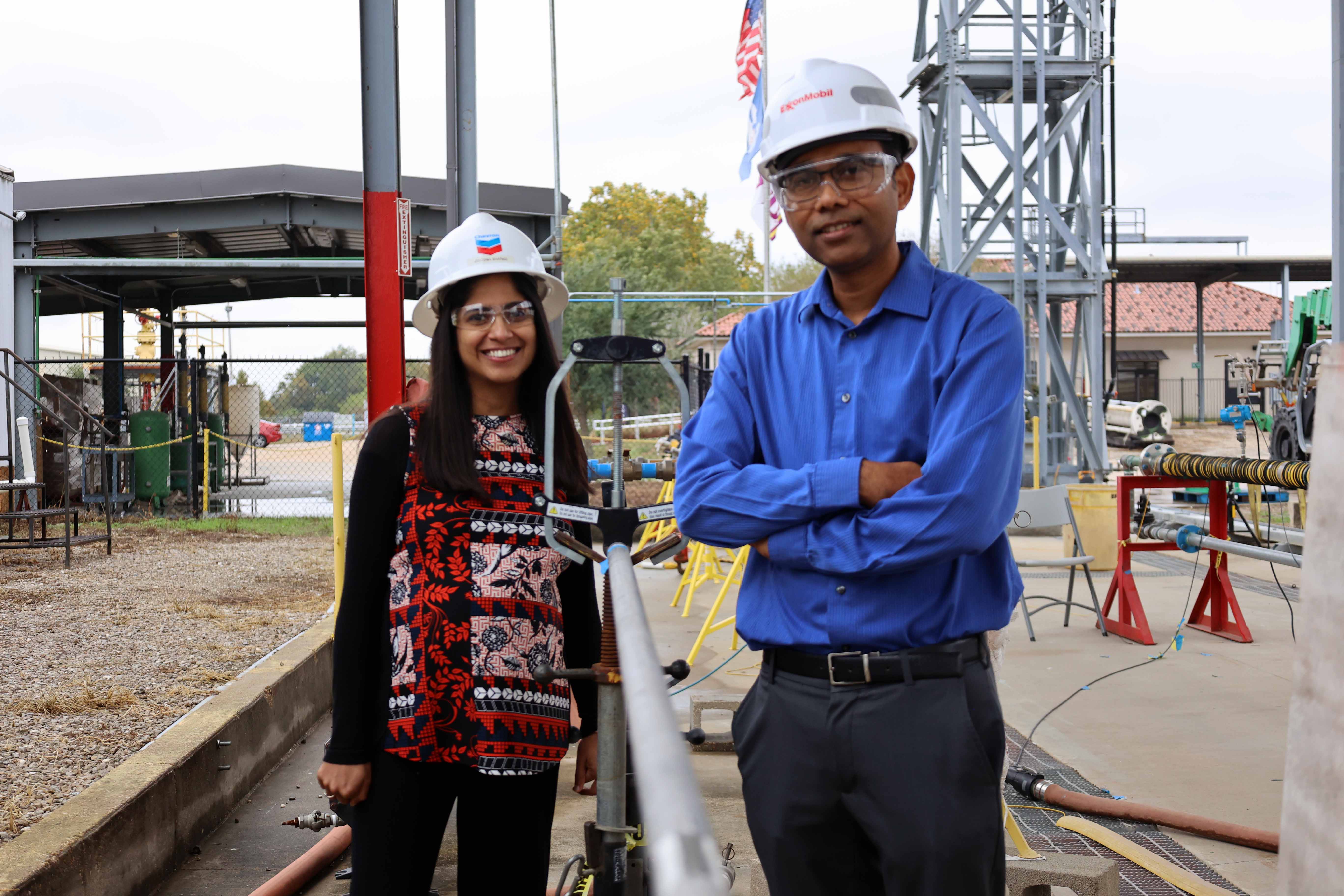LSU Petroleum, Mechanical Engineering Professors Developing Leakage Sensor for CCS Sites, CO2 Pipelines
November 27, 2023
 BATON ROUGE, LA – Carbon capture and storage (CCS) is a way of reducing carbon emissions
by capturing the carbon dioxide (CO2) produced by power generation or industrial activity;
compressing and transporting it via pipelines, trucks, or ships; and then storing
it deep underground in geological formations, such as saline aquifers or depleted
oil and gas reservoirs. While CCS has proven to be mostly safe, there is always a
chance of leakage.
BATON ROUGE, LA – Carbon capture and storage (CCS) is a way of reducing carbon emissions
by capturing the carbon dioxide (CO2) produced by power generation or industrial activity;
compressing and transporting it via pipelines, trucks, or ships; and then storing
it deep underground in geological formations, such as saline aquifers or depleted
oil and gas reservoirs. While CCS has proven to be mostly safe, there is always a
chance of leakage.
Thanks to a nearly $500,000 experimental grant from the LSU Institute for Energy Innovation, LSU Craft & Hawkins Department of Petroleum Engineering Assistant Professor Jyotsna Sharma is leading a team of researchers that includes LSU Mechanical Engineering Associate Professor Manas Gartia and collaborators at the National Energy Technology Laboratory (NETL) to develop a distributed fiber-optic sensor (DFOS) to monitor CO2 leaks and structural integrity in CCS sites and CO2 pipelines.
“The use of distributed fiber-optic sensors for leak and structural integrity monitoring is very attractive since a single cable can provide spatially- and temporally-continuous measurements and also enable seismic profiling along the entire length of the fiber with no additional electronics in the optical path,” Sharma said.
The DFOS is smaller than 1cm in diameter and is lightweight, allowing for a quick response time to a leak. Its flexibility also enables easy retrofitting on several kilometers of pipelines and wellbores.
“These wells and pipelines are so long that we need large-scale sensing,” Sharma said. “If we have a 5,000-ft. fiber, we have a 5,000-ft. sensor, which gives us a big advantage over regular CO2 point-sensors that only measure one location. If we know where it’s leaking, we can do something about it.”
Gartia is working on the synthesis of nanomaterials that will be sensitive to CO2. He and Sharma plan to coat the nanomaterials on the surface of the DFOS after removing the cladding.
“The synthesis of nanomaterials will be using a chemical synthesis process,” Gartia said. “We will try out a few different nanomaterials to find the optimum material suitable for achieving the best sensitivity and stability for the sensing application.”
Sharma says packaging of the sensor before deploying it into a well will be important.
“We want to make sure the coating on the fiber lasts for several years,” she said. “The longevity of the sensor will be something we need to evaluate.”
Sharma and Gartia will demonstrate the sensor performance experimentally in low- and high-pressure flow loop facilities and the 5,163-ft. deep wellbore at LSU’s PERTT Lab, as well as demonstrate the sensor in a CCS field site through their partnership with Shell, one of two industry collaborators on this project.
“We have two industry collaborators on this project—Shell and Air Products,” Sharma said. “Hopefully, having them will help us commercialize it and demonstrate it in the field. The idea of having partners is that we can learn and improve on the project because nothing is perfect the first go-round. We’re very excited to work with them.”
Like us on Facebook (@lsuengineering) or follow us on Twitter and Instagram (@lsuengineering).
###
Contact: Libby Haydel
Communications Manager
225-578-4840
[email protected]